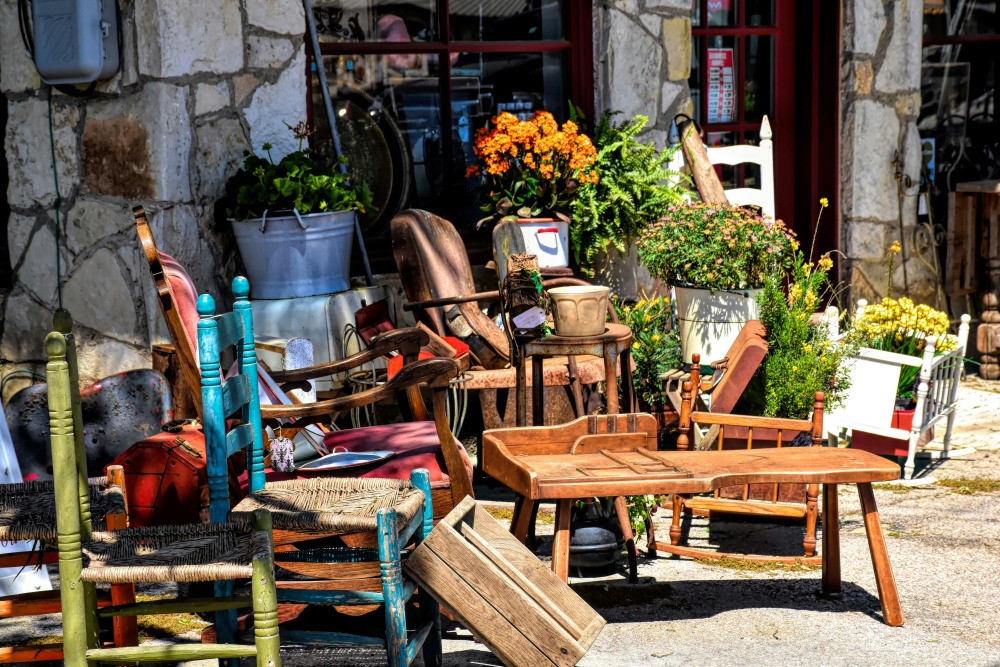Updated July 24, 2024
"Sodai Gomi" in Japan: How to throw away your oversized garbage
Japan is big on recycling and proper waste disposal, and everyone living there, including foreigners, is expected to dispose of their waste responsibly.
This means that getting rid of your home garbage comes with quite a set of rules. There’s a very well-thought-out system in place that works smoothly as long as everyone knows how to get rid of different types of waste correctly.
We’ve covered some of these in my post on why there are no trash cans in Japan, but each municipality and neighborhood handles its own waste management system, making it a collective community effort.
Therefore, getting rid of oversized items in Japan, called Sodai gomi, is something every foreign resident should learn about sooner rather than later. These items are regulated by a special set of rules, which I’ll explore below.
Let’s jump right in.
In this article: 📝
What Is Sodai Gomi: Oversized Garbage Japan
Before we get to the disposal system and the rules around oversized garbage, let’s explain what oversized garbage is in the first place.
One may think that if an item doesn’t fit into the regular trashcan, then it must be oversized garbage. However, this line of thinking doesn’t work in Japan for a couple of reasons.
For one, there are almost no trashcans in Japan. Instead of large garbage collection bins, there are designated trash collection areas where you’re supposed to leave your trash according to the collection schedule in your neighborhood.
On top of that, each city or municipality has its own set of waste management rules. This means that what can be considered oversized garbage in one city can be left at a regular garbage collection site in another.
In most cases, oversized or bulky garbage is measured by length. For instance, some municipalities consider items longer than 30 cm on one side to be oversized, while this limit is 50 cm for others.
Additionally, some municipalities also consider the weight of the items. As an example, some cities accept items heavier than 100 kg as oversized garbage.
Note that no matter the municipality, large electrical appliances such as washing machines, refrigerators, AC units (see my post on air conditioners in Japan), and personal computers don’t belong in the trash at all. Instead, these items should be taken to recycling shops or electronic appliance stores that accept used items.
Making a Sodai Gomi Collection Appointment: How To Get Rid of Large Garbage Japan

To get rid of an item you think might be oversized, check with your municipality’s garbage collection regulations first to make sure that it’s actually oversized. This information should be available online on your local government’s website.
For instance, here’s the Sodai Gomi information page from the official website for the City of Yokohama. Similar to this one, you’ll find dedicated pages for waste disposal and Sodai Gomi disposal separately on your local municipality’s official website.
On the website, you should also find a link to make a reservation for an oversized garbage pickup. Larger cities like Yokohama usually accept reservations both online and by phone, and some even via fax, but some cities only accept them via phone call, so check the website ahead of time to make sure.
Usually, sodai gomi days are scheduled beforehand, and there’s a specific day of the month for each residential area or neighborhood. You can check these dates on your municipality’s website and make an appointment accordingly.
Keep in mind that, unlike regular trash, the pickup of oversized garbage isn’t free of charge. So, you’ll have to pay a handling fee, which you’ll be informed about when you make the reservation. The exact amount depends on your municipality’s regulations.
Upon your phone call or online request, you’ll be assigned a garbage collection date and receive information on which collection sticker to buy.
Sodai Gomi Stickers Explained: What To Buy and Where
The next step to getting rid of your oversized garbage is acquiring the correct stickers. This will go on your oversized item when your appointed day comes.
Luckily, these stickers can be found at pretty much any convenience store. Just head on over to the nearest 7-Eleven or Lawson’s, or any other supermarket near you works just as well. Keep in mind that you need to acquire these stickers at a location in your city of residence. Each city has different types of stickers, so get them from a place near your home.
In every city, there are multiple types of stickers corresponding to items of smaller or larger size, and you’ll be informed of which stickers to get when you receive your appointment.
Sodai Gomi stickers can cost around 200-300 yen, but depending on the size and the number of items you’ll dispose of, you might have to buy multiple stickers and can end up paying around 1000-2000 yen. It all depends on the amount of garbage.
When you buy the stickers, the cashier will stamp them for you, which is required, but you will also have to fill them out with your name and the confirmation number you received when you got your appointment.
Dropping Off Your Oversized Item For Collection
Now that you have your items decorated with the correct stickers, it’s time to drop off your oversized trash at the location provided to you. This will be the location designated to you at the time of your reservation. It’ll usually be a trash collection spot near your place or even at your front door, so there's no need to worry about carrying it for too long.
If you want to make any changes to your reservation, you need to contact the garbage collection center directly. You can let them know if you wish to change the item size or change the number of items to be picked up. Be aware that some municipalities have a limit on how many pieces of oversized garbage you can put out at a time. Making changes to your reservation may require Japanese, so if you don’t speak Japanese, a friend can speak on your behalf as well.
On the collection day, make sure to take out your items early in the morning when garbage collection usually happens, between 5:00 am and 8:00 am.
Make sure your Sodai Gomi stickers are placed on each of your items correctly, and the rest will be handled for you!
Private Oversized Garbage Collection Agencies: Large Garbage Pickup Japan

While the local government’s waste management system does collect oversized garbage for a fee, if the next scheduled large garbage pickup date is too far away and you can’t drop off your item yourself, you have one more option.
There are private companies that offer garbage collection services, and they essentially do the exact same thing your local municipality does and are only a little more costly.
These garbage collection services offer much more flexibility when in a pinch, as they can pick up your oversized items at your desired location and time. Most of these companies also offer moving services, which are useful for relocating unused items to a storage unit or disposing of oversized garbage during the moving process.
For instance, Nishida Service and 55 OKATADUKE are two of many great services operating in Japan, and you can find more by simply searching for keywords such as “Japan large garbage service” or “booking large garbage collection Japan.”
Going with a private garbage collection service instead of handling it via the municipality’s collection service can be an especially good alternative for foreigners, as these usually offer services in English.
If you don’t trust your Japanese skills just yet, booking at the municipality may be a challenge, in which case private pickup services are totally worth the money.
Alternatively, you can start sharpening your skills right away by using one of the top Japanese learning tools I explored in another post, or check out my post on common Japanese phrases to get a headstart if you’re a complete beginner.
About The Disposal of Large Electrical Appliances
I mentioned that large electronics and home appliances aren’t accepted as regular sodai gomi and need to be disposed of using a different method.
This is because electronics come with many parts and materials that can be recycled and reused in many ways, so throwing them in the “trash” is a huge waste.
There are multiple ways to recycle your home appliances and electronics, one of which is to return the item to the store where you bought it.
This is especially a good idea if you’re simply replacing the item. You can just buy a new washing machine, for instance, and have the store take your old one for recycling. Although you’ll usually have to pay a fee for them to recycle it for you, it’s often the easiest way to get rid of large appliances.
At some stores, you may even receive a discount if you bring your item in yourself, while some only accept items for recycling on the condition that they pick it up themselves.
Municipality Recycling Centers and Moving Companies
If you can’t go to a store, another option is your local municipality's electrical appliance recycling center. Just like the Sodai Gomi system, this is a whole system on its own, and it requires a bit more Japanese as it’s more complex to apply for due to the number of stickers involved.
Plus, having to identify each item according to its exact model and brand is another struggle with this process, especially if you’ve bought your items abroad or if they’re very old.
Lastly, if you’re moving in Japan, another option is to use one of the private moving/garbage disposal companies I mentioned.
Most of them also recycle electric appliances. Technically, you can have the same company handle your moving, get rid of your oversized trash, like old furniture, and take away your appliances as well, which is nice during a hectic time like moving.
Closing Thoughts: Why Not Sell or Donate Instead?

As I conclude here, let’s continue with the theme of recycling and talk briefly about some better options to get rid of unwanted stuff.
If you’re just replacing items that are in good condition, why not consider donating or selling instead?
By donating your old stuff, you can have them upcycled and give someone exactly what they need.
Or, if you’re short on money and can use some extra cash for a big move, selling them on the second-hand market is another great option. There’s a big second-hand/used items market scene here in Japan, especially among foreign residents, and you can reach them through Facebook groups.
Just look up your city’s name along with the word “mottainai”, which means “no waste”, and you’ll find lots of groups where you can sell your old stuff.
If you’re not a Facebook user, you can also use an online marketplace app. For instance, Mercari, which is Japan’s largest online second-hand marketplace, allows you to sell off your previously loved items right on the smartphone app.
While I conclude on oversized garbage disposal here, if you have more questions about the ins and outs of living in Japan, my other posts on how to get your MyNumber Card and luggage delivery services in Japan may also pique your interest.
Get Job Alerts
Sign up for our newsletter to get hand-picked tech jobs in Japan – straight to your inbox.








